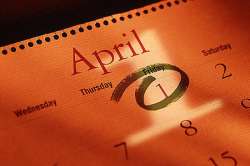New Delhi: While most of us plan on tricking friends, colleagues and loved ones on Fool’s Day, not many of us really know the reason why April 1 has the unique distinction of being the day we celebrate as Fool’s Day.
While there are many legends that explain the reason behind the origin of this day, we bring you some of the most popular and logical ones of them.
1. The most common theory behind the origin of Fool’s Day takes us back to the late 1500s. In 1582, European countries, especially France, switched from the Julian calendar, introduced by Julius Caesar, to the Gregorian calendar, proposed by Pope Gregory XIII, which later became the standard calendar of the 21st century.
The change in the calendar moved the beginning of the New Year from April 1 to January 1. The theory explains that some people either refused to accept the new Gregorian calendar or didn’t know about it and continued to celebrate the New Year’s Day on April 1. Other people started making fun of these traditionalists. Eventually, the practice first spread in the European countries and then throughout the world.
2. Another theory links the origin of Fool’s Day to the Roman festival of Hilaria that marks the celebration of the resurrection of the Roman God Attis. On Hilaria, also known as the Roman Laughing Day, people used to dress up in disguises and celebrate. Although Hilaria is marked on March 25, they would continue dressing up until April 1. Gradually, people around the world started following similar traditions as Hilaria.
3. Like Hilaria, other festivals have also been linked to Fool’s Day; like the Persian festival Sizdahbedar in which people in Iran play pranks on each other. It has also been associated with the Indian carnival Holi where people play pranks and through clours on each other.
4. The Jewish festival of Purim, which coincides with the advent of spring season, has also been related to the origin of Fool’s Day for a long time. The festivities involve carnivals, pranks and wearing disguises.
5. Many people believe that the roots of April Fool’s Day are related to the Spring Equinox, i.e. the first day of spring season in the Northern Hemisphere. Spring Equinox marks the change from winters to spring season when people are believed to have been ‘fooled’ by Mother Nature.

